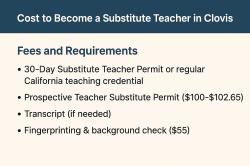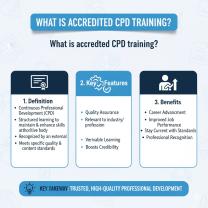What is the content of this microeconomics course based on?
Microeconomics Course Content Overview: What You’ll Learn
Microeconomics is the branch of economics that focuses on individual decision-making and the behavior of firms, consumers, and markets. Unlike macroeconomics, which looks at the economy as a whole, microeconomics dives into the small-scale economic interactions that shape everyday life. If you’re considering taking a microeconomics course, here’s an overview of what you can expect to learn.
1. Introduction to Microeconomics
The course typically starts with the foundations of economic thinking, including:
Basic economic concepts: scarcity, choice, and opportunity cost
How individuals and firms make decisions
Supply and demand principles
2. Supply and Demand
A core part of microeconomics is understanding how markets work. Topics include:
Determinants of supply and demand
Market equilibrium and price mechanisms
Effects of government intervention, such as taxes and subsidies
3. Consumer Behavior
Students learn how individuals make choices about spending and consumption:
Utility and satisfaction
Budget constraints and trade-offs
How consumers respond to changes in price and income
4. Production and Costs
This section examines how businesses operate efficiently:
Production functions and input-output relationships
Short-run vs. long-run costs
Economies of scale and productivity
5. Market Structures
Microeconomics explores different types of markets and competition:
Perfect competition
Monopoly and monopolistic competition
Oligopoly and strategic behavior
Pricing strategies and market power
6. Factor Markets and Income Distribution
Learn how resources like labor, land, and capital are allocated:
Labor market dynamics and wage determination
Capital markets and interest rates
Income distribution and economic efficiency
7. Market Failures and Government Intervention
No market is perfect. Topics include:
Externalities (positive and negative)
Public goods and common resources
Government policies to correct inefficiencies
8. Game Theory and Strategic Behavior (Advanced Topics)
Some courses introduce game theory to analyze strategic interactions between firms and consumers:
Nash equilibrium
Oligopoly pricing games
Competitive strategies
A microeconomics course gives students a comprehensive understanding of how individuals and firms make decisions and how markets function. By the end of the course, you’ll be able to analyze supply and demand, evaluate market outcomes, and understand the impact of government policies on economic behavior.
Microeconomics Course Content Overview
| Topic | Key Concepts | What You Learn |
|---|---|---|
| Introduction to Microeconomics | Scarcity, opportunity cost, economic decision-making | Understand the basics of individual and firm choices |
| Supply and Demand | Market equilibrium, price mechanisms, government intervention | Analyze how markets reach equilibrium and how prices are set |
| Consumer Behavior | Utility, budget constraints, trade-offs | Learn how individuals make consumption choices |
| Production and Costs | Production functions, short-run vs. long-run costs, economies of scale | Evaluate how firms produce efficiently and manage costs |
| Market Structures | Perfect competition, monopoly, oligopoly, pricing strategies | Understand different market types and firm behavior |
| Factor Markets & Income | Labor, capital, land markets, wage determination | Examine how resources are allocated and income is distributed |
| Market Failures & Government Intervention | Externalities, public goods, policy solutions | Learn why markets fail and how governments can intervene effectively |
| Game Theory & Strategic Behavior | Nash equilibrium, competitive strategies | Analyze strategic decision-making in competitive environments |
What are the core topics covered in a microeconomics course?
A microeconomics course focuses on the economic behavior of individual agents, such as consumers, firms, and resource owners. The core topics generally covered include:
Supply and Demand: The fundamental model that explains how prices and quantities are determined in a market.
Consumer Theory: The study of how consumers make choices to maximize their satisfaction (utility) based on their budget constraints.
Production and Cost Analysis: The examination of how firms decide on production levels to maximize profits, considering various costs.
Market Structures: The analysis of different types of markets, including perfect competition, monopoly, oligopoly, and monopolistic competition.
Factor Markets: The study of markets for factors of production like labor and capital.
Market Failure and Government Intervention: Topics that explore why markets may not be efficient and the role of government policy to correct these failures.
How do microeconomics courses use real-world examples to explain concepts?
Microeconomics courses heavily rely on real-world examples to make abstract concepts relatable and understandable. For instance, the concept of opportunity cost can be explained by using the decision a student makes between attending a class or working a part-time job. The law of demand can be illustrated by showing how a drop in the price of a popular product, like a smartphone, leads to an increase in sales. Similarly, elasticity is often explained with examples of how changes in gas prices or the price of a luxury good affect consumer spending. These practical examples help students see how economic principles operate in their daily lives.
What is the basis for a microeconomics course's focus on supply and demand?
The focus on supply and demand is the bedrock of a microeconomics course because it is the foundational model for how most markets function. This model explains how the interaction between the quantity of a product that sellers are willing to provide (supply) and the quantity that buyers are willing to purchase (demand) determines the market price and the quantity traded. It provides a simple yet powerful framework for analyzing market behavior, predicting the effects of various events (like a tax or a subsidy), and understanding how markets allocate scarce resources efficiently.
How do microeconomics courses analyze different market structures?
Microeconomics courses analyze different market structures by examining the characteristics that define each one and the behavior of the firms within them.
Perfect Competition: Characterized by many small firms, identical products, and free entry/exit. Firms are price takers.
Monopoly: Defined by a single seller of a unique product, with significant barriers to entry. The firm is a price maker.
Oligopoly: A market dominated by a few large firms. The key feature is interdependence, where each firm's decisions are influenced by and affect the others.
Monopolistic Competition: A market with many firms selling differentiated but similar products. The key is product differentiation through branding, quality, or features.
Courses analyze how firms in each structure set prices, what their long-run profits are, and how they behave strategically in the market.
What is the role of government intervention and market failure in microeconomics?
In microeconomics, a market failure is a situation where the market, on its own, fails to allocate resources efficiently. Key types of market failures include:
Externalities: When a transaction has a positive or negative effect on a third party not involved in the transaction (e.g., pollution from a factory).
Public Goods: Goods that are non-excludable and non-rival, leading to the "free-rider problem" (e.g., national defense).
Asymmetric Information: When one party in a transaction has more information than the other.
Government intervention is studied as a potential solution to these failures. This can include policies like taxes on negative externalities (e.g., carbon tax), subsidies for positive externalities, and regulations to correct for asymmetric information. The role of government is to improve market efficiency and promote social welfare when the market mechanism alone is insufficient.











